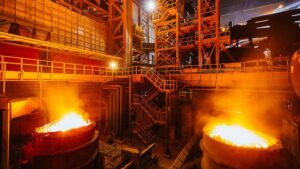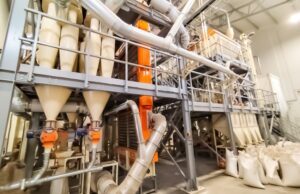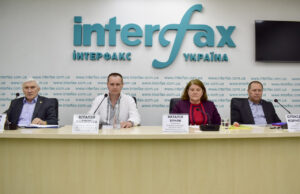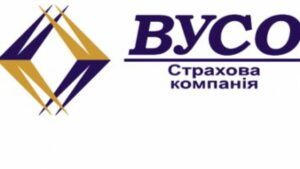
In March 2025, Ukrainian steelmakers reduced steel production by 9.9% compared to the same period in 2024, to 551 thousand tons from 611 thousand tons, and by 3.7% compared to the previous month, when 572 thousand tons were produced.
In the ranking of global producers of these products compiled by the World Steel Association (Worldsteel), Ukraine ranked 24th among 69 countries.
According to Worldsteel, in March 2025, half of the top ten countries, except for China, India, Japan, Brazil, and Iran, recorded a decline in steel production compared to March 2024.
The top ten steel producing countries in March are as follows: China – 92.840 million tons (+4.6% compared to March 2014), India – 13.789 million tons (+7%), Japan – 7.207 million tons (+0.2%), the United States – 6.712 million tons (-1.5%), and the Russian Federation – 6.2 million tons (-3.2%), South Korea – 5.008 million tons (-5.3%), Iran – 3.332 million tons (+3.7%), Turkey – 3.130 million tons (-2.8%), Germany – 3.1 million tons (-11.7%) and Brazil – 2.944 million tons (+6.6%).
Overall, in March this year, steel production increased by 2.9% year-on-year to 166.123 million tons.
The top ten steel-producing countries for the first three months of this year are as follows: China – 259.330 million tons (+0.6% compared to January-March 2024), India – 40.123 million tons (+6.8%), Japan – 20.393 million tons (-4.9%), the United States – 19.726 million tons (-0.6%), and the Russian Federation – 17.740 million tons (-3.8%), South Korea – 15.543 million tons (-3.6%), Turkey – 9.257 million tons (-3.4%), Germany – 8.482 million tons (-12.6%), Brazil – 8.477 million tons (+2.8%) and Iran – 7.290 million tons (-12.8%).
In the first quarter of this year, Ukrainian steelmakers increased steel production by 2.7% compared to the same period in 2024, up to 1.733 million tons from 1.687 million tons, ranking the country 23rd.
In January-March 2025, global steel production decreased by 0.4% compared to the same period in 2024 to 468.613 million tons.
As reported, in 2024, the top ten steel producing countries among 71 countries were as follows: China – 1 billion 5.090 million tons (-1.7%), India – 149.587 million tons (+6.3%), Japan – 84.009 million tons (-3.4%), the United States – 79.452 million tons (-2.4%), the Russian Federation – 70.690 million tons (-7%), South Korea – 63, 531 million tons (-4.7%), Germany – 37.234 million tons (+5.2%), Turkey – 36.893 million tons (+9.4%), Brazil – 33.741 million tons (+5.3%) and Iran – 30.952 million tons (+0.8%).
In total, 71 countries produced 1 billion 839.449 million tons of steel last year, which is 0.9% less than in 2023.
At the same time, Ukraine produced 7.575 million tons of steel in 2024, up 21.6% from 6.228 million tons in 2023. The country was ranked 20th in 2024.
In 2023, China produced 1 billion 19.080 million tons (at the level of the previous year), India – 140.171 million tons (+11.8%), Japan – 86.996 million tons (-2.5%), the United States – 80.664 million tons (+0.2%), the Russian Federation – 75, 8 million tons (+5.6%), South Korea – 66.676 million tons (+1.3%), Germany – 35.438 million tons (-3.9%), Turkey – 33.714 million tons (-4%), Brazil – 31.869 million tons (-6.5%) and Iran – 31.139 million tons (+1.8%). In total, 71 countries produced 1 billion 849.734 million tons of steel in 2023, which is 0.1% less than in 2022.
At the same time, Ukraine produced 6.228 million tons of steel in 2023, which is 0.6% lower than in 2022. The country was ranked 22nd in 2023.
In 2022, the top ten steel-producing countries were as follows: China – 1.013 billion tons (-2.1%), India – 124.720 million tons (+5.5%), Japan – 89.235 million tons (-7.4%), the United States – 80.715 million tons (-5.9%), the Russian Federation – 71.5 million tons (-7.2%), South Korea – 65, 865 million tons (-6.5%), Germany – 36.849 million tons (-8.4%), Turkey – 35.134 million tons (-12.9%), Brazil – 33.972 million tons (-5.8%), and Iran – 30.593 million tons (+8%).
Ukraine ranked 23rd in 2022 with 6.263 million tons of steel produced (-70.7%).
In total, 64 countries produced 1 billion 831.467 million tons of steel in 2022, which is 4.3% less than in 2021.

Ukraine has created the Alliance for Digital Sovereignty, which brings together cloud providers and data centers. The first members of the Ukrainian Alliance for Digital Sovereignty, cloud providers GigaCloud, De Novo, and the Parkovy data center, have agreed to cooperate for Ukraine’s sustainable technological development on the basis of national platforms.
The prerequisite for the association was the foreign policy instability that has seriously affected the global technology market, as well as the country’s digital and economic security. “Unfortunately, we are increasingly seeing technological solutions becoming an instrument of political pressure from one country to another. As market players focused on the national market, our mission is not only to sell our services here, but also to protect the country’s economy, which is the “living environment of our business and our customers,” the Alliance representatives say.
The main goal of the event is to ensure Ukraine’s digital sovereignty, i.e. transfer, storage and processing of important data, including government, medical, financial and defense data, within the country and in accordance with the requirements of current Ukrainian legislation. “Due to the war, Ukraine is probably the only country in the world where state data is partially stored abroad. After the war is over, the issue of returning this data to Ukrainian jurisdiction will arise. Therefore, we are ready to engage in a dialogue with government agencies to develop a strategy for such a return,” the Alliance founders said.
The areas of work include a technological “audit” of the country, as well as the development of unified standards for infrastructure solutions. Providers are confident that this approach will provide Ukraine with a number of new opportunities:
– build large geo-distributed infrastructures between the sites of national providers;
– easily and seamlessly transfer data between cloud environments of different providers without artificial technological barriers;
– ensure the security (and safety) of user data even in critical situations, including in the event of hostile attacks;
– implementing the Data Embassy policy and multi-domain security technology.
Representatives of the Alliance emphasize the need to increase the competitiveness of the Ukrainian market, stimulate innovation and strengthen cybersecurity. They share the understanding that Ukraine needs to become stronger, able to manage its own data – a strategic resource that is the basis for economic growth and development of the industries of the future – and this gives them a common motivation to be part of important state changes. The Alliance is open to other companies that share its principles and strive to work for the benefit of national digital security and sovereignty, including data centers, software companies, and infrastructure providers.

Olis (Odesa) has designed and launched a new turnkey cereal processing plant for Tõrvaaugu Mahe Talu (Leibre, Estonia) with a capacity of 24 tons per day, said Dmitry Kisilevsky, deputy chairman of the parliamentary committee on economic development.
“The aggregate groats mill is based on the advanced Optymatik-G-24 technology, which involves processing buckwheat grain into kernels. The production complex also includes aspiration, gravity transport, pneumatic transport, electronics and automation,” he wrote on Facebook on Wednesday.
According to the MP, Olis’ technologists adapted the equipment to the architectural features of the Estonian customer’s production facility and implemented multi-format packaging – from big bags to small packaging.
“To manufacture the equipment for the new cereal mill, Olis took advantage of the state program of affordable loans “5-7-9”, he said.
Kysylevsky added that Olis produces more than 200 types of equipment for processing grain into flour and cereals, cleaning and quality control of grain. The capacity of the groats mills it designs and installs ranges from 15 to 300 tons per day.
The share of exports in the company’s sales is 25%. The level of localization of its equipment is about 75%. The company employs 211 people.
“The program to compensate 25% of the cost of agricultural machinery is already helping the plant to compete in the domestic market with producers from Turkey, China, Switzerland, Poland, and Canada. (…) The opportunity to sell equipment with buyers using government grants for processing (up to UAH 8 million on a co-financing basis) is also relevant for the company. After all, the cheapest cereal processing plant produced by Olis costs from UAH 4 million,” Kysylevsky said in a statement.
According to the company’s website, Olis LLC has been operating in Ukraine for 20 years, developing, manufacturing and installing equipment for grain cleaning, processing and quality control. It has created, among other things, one of the world’s largest grain cleaning drum separators, Luch-300, with a capacity of over 300 tons per hour, which is installed, among others, at the Starokostiantyniv Grain Processing Plant, Transgrainterminal in Chornomorsk, and other enterprises in Ukraine and abroad.
Currently, it exports its products to more than 35 countries: from Canada to Tanzania, from the EU to Central Asia.
According to the Clarity Project, in 2024, the company earned UAH 10.4 million in net profit, compared to UAH 1.4 million in losses last year, with revenue increasing by 53% to UAH 234 million.
The co-founders of Olys LLC are three Odesa-based entrepreneurs – Oleksandr Vereshchynskyi (30%), Oleh Vasyliev, and Larysa Ostapenko (35% each).

The National Agrarian Academy of Sciences (NAAS) calls on the current government and the State Property Fund (SPF) of Ukraine to engage in a constructive dialogue on agricultural land that is under the Academy’s jurisdiction.
This was stated at a press conference at the Interfax-Ukraine agency by Valeriy Adamchuk, Chief Scientific Secretary of the National Academy of Agrarian Sciences, Director of the Institute of Mechanics and Automation of Agricultural Production, Doctor of Technical Sciences.
He reminded that NAAS is a state self-governing scientific organization that includes 82 scientific institutions, including eight national research centers, 32 research institutes, 39 research stations, the Askania Nova Biosphere Reserve, and 91 legal entities, including state-owned enterprises. Out of a total of 175 legal entities, 12 are currently under occupation, eight are in bankruptcy, and seven state-owned enterprises are inactive.
“As of January 1, 2025, NAAS has fulfilled its obligations to the state, which should have preceded the optimization of the land plots that were and are on the balance sheet of the academy. If last year we had 462 thousand hectares of land, then after fulfilling the relevant government orders, 210 thousand hectares were transferred to the State Property Fund. Thus, NAAS has 276.7 thousand hectares in use, including 217 thousand hectares of arable land,” the representative of the Presidium of the Academy emphasized.
Adamchuk emphasized that the SPF has initiated the preparation of a draft order of the Cabinet of Ministers, which provides for the withdrawal of land not only from NAAS research farms but also from research institutions and their transfer to the permanent use of the State Enterprise “Reserve”. He believes that this will lead to the deprivation of land for scientific institutions, which will be left with only the buildings and territories on which they are located. At the same time, all issues related to the establishment of experiments and breeding work are under threat. Scientific institutions and the Presidium of the National Academy of Sciences held relevant meetings, discussed the situation regarding the SPF’s intentions to seize 135,000 hectares from the National Academy of Sciences and sent relevant appeals to the authorities.
The Chief Scientific Secretary of the National Academy of Sciences drew attention to the fact that Ukraine opened its borders in the face of a full-scale invasion and abolished control systems for the unimpeded importation of all components of agricultural production: imported fertilizers, pesticides, seeds, machinery, fuel and lubricants, etc. Instead, Europe is in no hurry to open its market to Ukrainian agricultural products. Such dependence on imports, especially in times of war, creates high risks for the agricultural country and its food security.
According to Adamchuk, the NAAS agricultural land in relation to the land of Ukraine is less than 0.5% and its withdrawal will not bring super-effects to the state. In addition, he stressed that the SPF has not yet released information on the privatization and its effectiveness of the agricultural land of the Academy, which was previously transferred to the state.
Oleksandr Korniychuk, Director of the Institute of Feed and Agriculture of Podillia, Doctor of Agricultural Sciences, said that the institute is located in Vinnytsia and has accumulated 1669 hectares of land over the years, including about 180 hectares of forest plantations. All the land is used for scientific research, in particular, research on the creation of new varieties, the development of new technologies, in particular, in seed production. The Institute has created about 210 varieties, 130 of which are currently included in the State Register of Plants Suitable for Distribution in Ukraine. The Institute breeds 30 different crops and is a leading institution specializing in the development of fodder production.
Korniichuk noted that the institute’s scientists provide advisory services in Vinnytsia, Khmelnytsky, and Ternopil regions. In Vinnytsia region alone, there are about 274 individual farmers, about 2.4 thousand farmers, about 800 medium and large farms, and agricultural holdings that use the services of scientists.
“It is important for the institute to preserve the land resource in the amount that the institution has today. Limiting it will reduce the amount of scientific work. In general, all this will lead to large losses for our country in the future. The main task that we see today is to create new innovations, disseminate them and implement them in agricultural production,” he said and called on the SPF and the Cabinet of Ministers to review the draft decisions and preserve the land resource for scientific institutions, and to enable the retention of labor collectives.
Korniichuk emphasized that the 210 thousand hectares of land that belonged to the National Academy of Sciences transferred to the SPFU have not been fully utilized. Currently, about 40 thousand hectares are up for auction. The state has not yet received the expected result.
“The land is empty, it does not bring profit, and thus loses its main efficiency, let’s say, soil fertility,” the scientist emphasized.
Vitaliy Kabanets, Director of the Institute of Agriculture of the North East of the National Academy of Sciences of Ukraine, noted that his research institution and its research enterprises are the only elite pig producer in the region. The institute owns 287 hectares of land where it breeds buckwheat and hemp. After conducting a survey of a number of crop and livestock farms, the Institute compared them and its performance and concluded that it was an efficient farm. The scientific institution pays taxes to the state and pays UAH 9 thousand for renting 1 hectare, and its research farms pay UAH 6-6.5 thousand per 1 hectare, while the figure for commercial agricultural enterprises is UAH 5-7 thousand per 1 hectare.
He expressed concern about the fate of the herd raised by the institute, because if 100% of the arable land is seized from the institute, the feed base for animals will completely disappear.
Kabanets noted that any reform should be clear: it should have a beginning, an algorithm of actions and a predictable result. Before implementing it, the problem should be discussed and compromises should be sought so that the whole country can get a positive result.
Nataliia Buniak, director of the Nosivka Breeding and Research Station of the Myronivka Institute of Wheat of the National Academy of Agrarian Sciences of Ukraine, said that the station has been operating in Chernihiv Oblast for 114 years. It specializes in breeding rye, oats, barley, and perennial grasses. Over the past five years, it has included 19 varieties in the State Register of Varieties Suitable for Distribution in Ukraine. As of January 1, 2025, the institution is represented in the State Register by 45 varieties in 13 crops.
At the same time, the state allocated UAH 611 thousand for the maintenance of the Nosivka station in 2021 and UAH 348 thousand in 2023. The institution, in turn, has transferred UAH 158 million to the state’s special funds over five years, an average of UAH 31.6 million per year, of which UAH 24.2 million in taxes were paid annually. In 2024, this amount amounted to UAH 5.7 million, which averaged UAH 5.8 million per hectare with a minimum tax liability of UAH 1.3 million. In 2018-2024, the station spent about UAH 95 million on science and at the same time provided farmers with high-quality seeds.
In January 2025, the Nosivka breeding and research station, like all agricultural research institutions, passed state certification. Its team hopes that all misunderstandings will be resolved through constructive discussions. Scientists will remain with the accumulated land and will be able to continue to provide producers with quality seeds, which help them to finance their work and maintain the land they use.
Valeriy Adamchuk, Chief Scientific Secretary of the National Academy of Sciences, and the heads of scientific institutions hope to have a constructive discussion with the government and the SPF before any decisions are made.

IMC Agro Holding started the 2025 spring sowing campaign on April 16 and plans to plant 64.8 thou hectares of corn and 24.9 thou hectares of sunflower, the company’s press service reports.
“Despite the rainy and cold start to spring, as well as frequent air raids, thanks to timely tillage operations in the fall of 2024, the company managed to start the current year’s sowing campaign on time,” said Bohdan Kryvitsky, Chief Operating Officer of IMC.
He expressed confidence that due to the quality upgrade of equipment, IMC will be able to meet the optimal deadlines.
“All inventories have been purchased and delivered, the machinery is in good working order, and all production personnel are ready to lay the foundation for the upcoming spring crops,” Mr. Krivitsky emphasized.
As reported, in the fall of 2024, IMC sowed winter wheat on an area of 20.7 thou hectares, which is about 17% of the company’s land bank.
IMC Agro Holding is an integrated group of companies operating in Sumy, Poltava and Chernihiv regions (north and center of Ukraine) in the crop production, elevators and warehouses segments. The company has a land bank of about 120 thousand hectares and storage capacities of 554 thousand tons, with a harvest of 1.002 million tons in 2023.
In January-September 2024, IMC increased its revenue to $140.8 million, up 43% compared to the same period in 2023. The increase in normalized EBITDA in January-September 2024, as well as the increase in net profit in the agricultural holding, was attributed to higher sales volumes and higher grain prices.

The municipal enterprise “Gorzelentrest” (Odessa) has announced its intention to conclude a contract with IC “VUSO” for the purchase of compulsory insurance of civil liability of owners of land vehicles (OSAGO). According to the message in the system of electronic public procurement “Prozorro”, the price offer of the company, the only participant of the tender, amounted to UAH 567,814 thousand at the expected cost of UAH 591,780 thousand.
IC “VUSO” was founded in 2001. It is a member of ITSBU and NASU, a participant of the agreement on direct settlement of losses and a member of the Nuclear Insurance Pool.